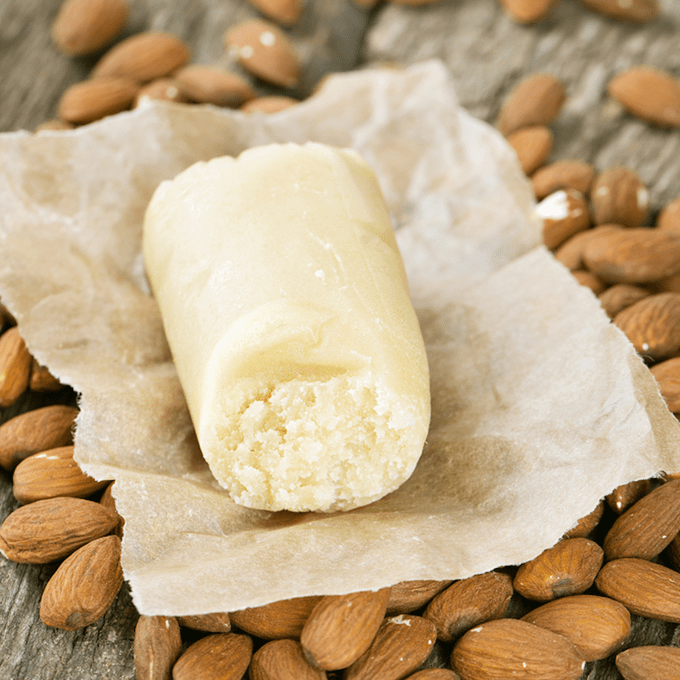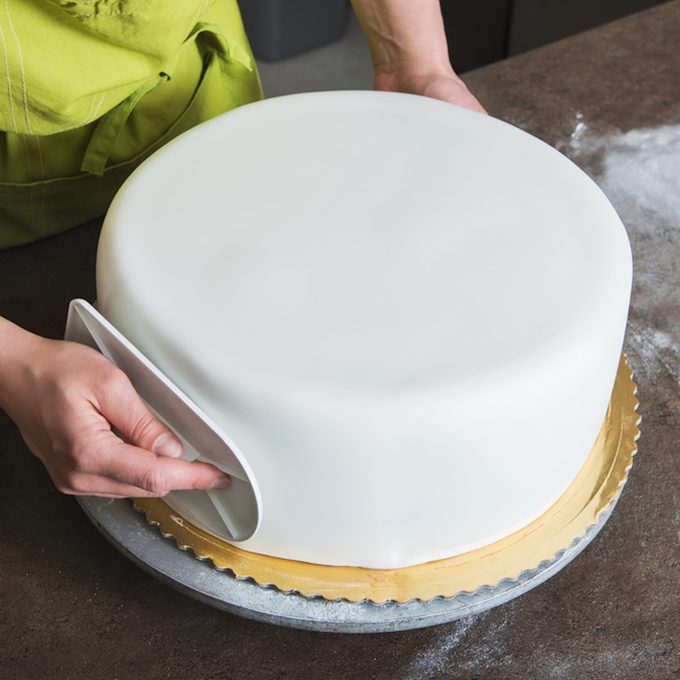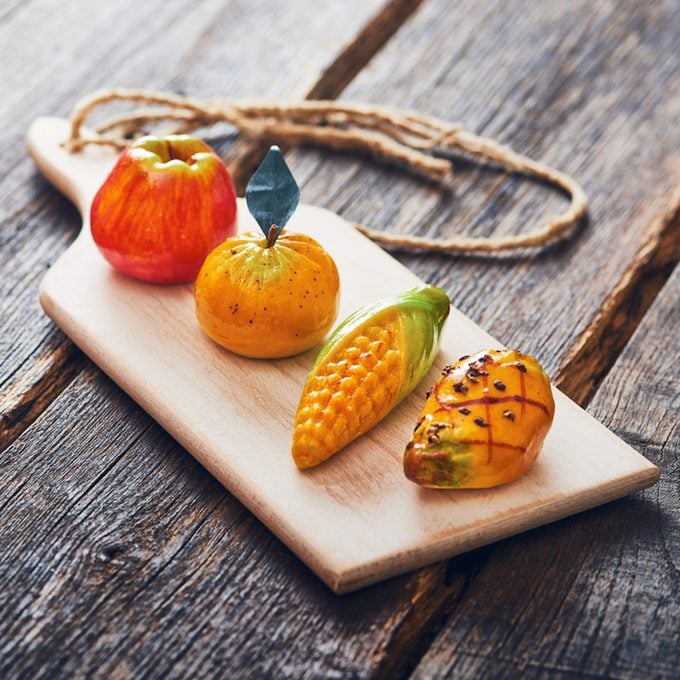Marzipan, Fondant and Almond Paste—What’s the Difference?
Updated: May 15, 2023

Trust us: You're not the first person who has wondered, "What is marzipan? Or fondant? Even almond paste?" These three ingredients are almost one and the same, so find out what sets them apart.
If you often find yourself binge-watching baking shows like us (we love these Great British Baking Show copycat recipes), then you’re probably at least somewhat familiar with marzipan, fondant and almond paste. But when it comes to defining and differentiating them, that’s where things can get a little complicated—and that’s OK. These three baking essentials are oh, so similar, so it’s reasonable for home cooks to get confused. Read on for an easy-to-use description of each:
What Is Almond Paste?

Almond paste is the most common of the three among non-professionals. (It’s a snap to make. Seriously, just try out our recipe!)
Ingredients: Almond paste is composed of blanched ground almonds, sugar, glycerin—a sweet, thick liquid—and occasionally, almond extract for additional nutty flavor.
Taste and Feel: Almond paste is semi-bitter and coarser than its counterparts.
Uses: Almond paste is most commonly used as an ingredient or filling for sweet treats, such as bars, cakes and cookies (this Dutch Treats recipe is delish!). It is not enjoyed on its own.
Packaging: This product can be purchased in most supermarkets (and on Amazon) and is available in either cans or plastic packages.
What Is Fondant?

There are two types of fondant: rolled and poured. You’d be hard-pressed to find a non-professional chef who uses poured fondant. In fact, most commercial kitchens purchase it ready-made because of the precision required in the production process. For this reason, we’ll be talking about the rolled kind.
(Want easy cake-decorating ideas? These are all you need.)
Ingredients: Fondant is a mixture of sugar, water and cream of tartar that is cooked to the soft-ball stage, which essentially just means it’s cooked until it reaches around 230°.
Taste and Feel: After cooling, beating and kneading, fondant becomes very pliable. It is not overly flavorful—naysayers will argue is not nearly as good as a buttercream alternative—but its taste is sometimes enhanced with clear vanilla.
Uses: This product is often used for decorative purposes or as candy centers. In addition to being molded into shapes, bows, etc., it can also be rolled into a sheet and draped over cakes as a sort of icing. Food coloring and flavoring are often added for aesthetic purposes.
Packaging: Fondant is commonly sold in tubs or plastic bags.
What Is Marzipan?

Also called almond candy dough, marzipan is an agreeable, multi-purpose combo of the first two, with a subtle almond flavor and unmatched malleability. Be sure to try these marzipan cake recipes.
Ingredients: Marzipan is made up of almond paste (see above for ingredients), sugar, water and occasionally, unbeaten egg whites.
Taste and Feel: This ingredient is sweet, smooth and pliable. (Fun fact: It contains half the almonds and twice the sugar as almond paste, which explains why it’s so much sweeter.) It is also sometimes enhanced with spices such as vanilla, cinnamon or nutmeg.
Uses: In the U.S., marzipan is most commonly molded to look like ultra-realistic fruit, but it can be shaped into other decorations for confections or used as icing for cakes, similar to fondant.
Packaging: Marzipan is purchasable in many grocery stores (and online) by can, tub or plastic-wrapped log. Or in pretty pre-made shapes.
Note: Every product is independently selected by our editors. If you buy something through our links, we may earn an affiliate commission.




















